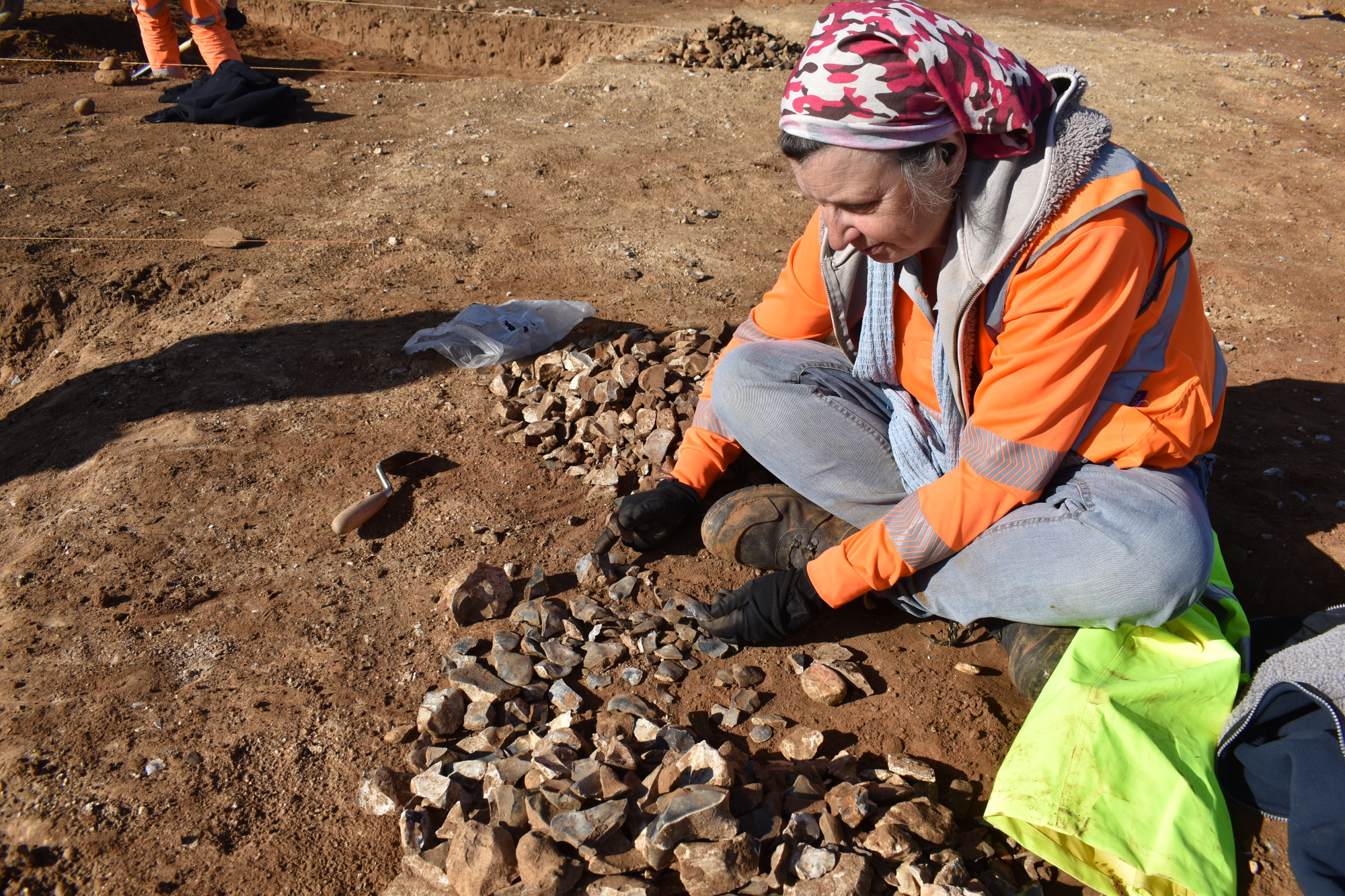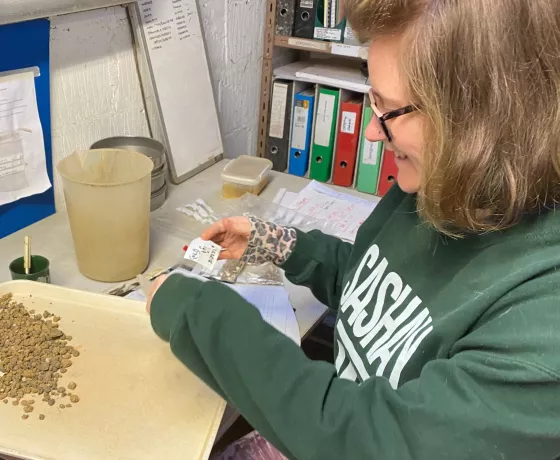In our excavations by the Wellcome Genome Campus at Hinxton, our team of archaeologists have uncovered a barrow, a monumental feature dating to the Bronze Age, almost 4,000 years ago. Barrows can sometimes contain graves, and ours does. However, due to the soil conditions at Hinxton, very little of the people who were laid to rest here remains preserved after thousands of years underground. That doesn’t mean that these sites will be treated with any less respect than they deserve.
Zoe, our osteoarchaeologist and Lily, one of our graduate trainees have been carefully digging around the remains, cleaning them and recording them with both photos and photogrammetry, which is a way of stitching many photos together in order to create a 3D model of the burial.
Barrows come in many shapes and sizes and can be long, round or, more rarely, bowl shaped. All are usually a mound of earth with a surrounding ditch. In our case, our barrow has only the outer ring ditch. Due to the cumulative effects of ploughing, what would have once been the barrow mound, has been gradually eroded over many centuries.
‘Not caught knapping…’
Flint knapping is the process of making stone tools from flint, this happens by the flint being knocked with stone, or perhaps, with wooden or bone tools. As the Bronze Age drew on, flint knapping seems to have become less refined but, no less important to both the society and for our understanding of the time period.
There is evidence of this process being practised at or near to barrows during the Bronze Age. There seems to be a ritual and practical reason for the practice. Perhaps by creating flint tools near the burial monument, people could connect to those that had come before them.
On Wednesday, Oxford Archaeology Cambridge's flint specialist Laurence came to site and gave us all a talk about flint tool production in and around barrows in the Bronze Age. We are currently conducting a 100% sample of the flint we find within the barrow ditch. This will help us further understand what people were doing at this barrow nearly 5000 years ago.

One of our experts checks the flints dug from the surrounding ditch of the barrow.
So fresh from our talk from Laurence and led by our on-site flint expert Ro, we set to work continuing to dig around the barrow and collect as much worked flint as we could find. Stay tuned for further updates about the barrow and other areas of our Hinxton excavation.
Other posts in this collection
Read our latest posts about the archaeological investigations at Hinxton.





